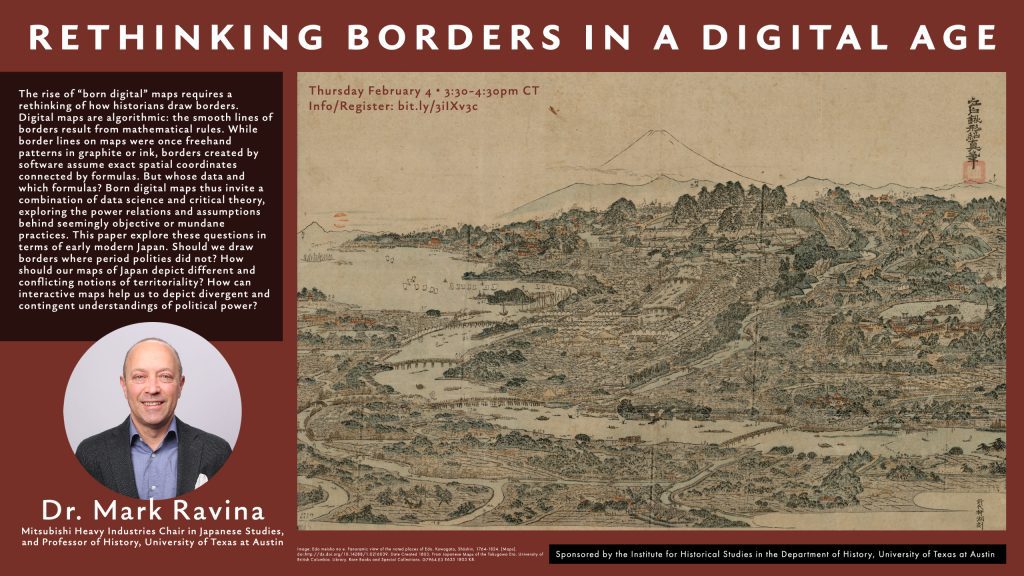Institute for Historical Studies, Thursday February 4, 2021
The rise of “born digital” maps requires a rethinking of how historians draw borders. Digital maps are algorithmic: the smooth lines of borders result from mathematical rules. While border lines on maps were once freehand patterns in graphite or ink, borders created by software assume exact spatial coordinates connected by formulas. But whose data and which formulas? Born digital maps thus invite a combination of data science and critical theory, exploring the power relations and assumptions behind seemingly objective or mundane practices. This paper explore these questions in terms of early modern Japan. Should we draw borders where period polities did not? How should our maps of Japan depict different and conflicting notions of territoriality? How can interactive maps help us to depict divergent and contingent understandings of political power? Dr.
Mark Ravina is the Mitsubishi Heavy Industries Chair in Japanese Studies and Professor in the Department of History at the University of Texas of Austin. His specialty is Japanese history, especially eighteenth and nineteenth-century politics, but his broader methodological interest is in the transnational and international dimension of state-building. He is the author of four books, including most recently To Stand with the Nations of the World: Japan’s Meiji Restoration as World History (Oxford University Press, 2017), which won the 2018 Book Prize of the Southeast Conference of the Association for Asian Studies. His current research focuses on political language in nineteenth-century Japan, with a focus on text mining.
The views and opinions expressed in this article or video are those of the individual author(s) or presenter(s) and do not necessarily reflect the policy or views of the editors at Not Even Past, the UT Department of History, the University of Texas at Austin, or the UT System Board of Regents. Not Even Past is an online public history magazine rather than a peer-reviewed academic journal. While we make efforts to ensure that factual information in articles was obtained from reliable sources, Not Even Past is not responsible for any errors or omissions.




